As pharmaceutical industry business owners, you are responsible for ensuring the integrity and safety of your products. The presence of rodents, insects, and microorganisms not only risks the physical integrity of your pharmaceutical products but also threatens to contaminate raw materials and finished goods, undermining the effectiveness of medications and posing severe health risks.
Implementing effective pest control procedures in the pharmaceutical industry is thus not merely about regulatory compliance; it’s a crucial aspect of maintaining operational excellence and ensuring the quality and safety of your products. In this blog, we will discuss some of the best pest control procedures for ensuring the complete safety of your pharmaceutical products and eradicating pests.
Types of Pests in the Pharmaceutical Industry
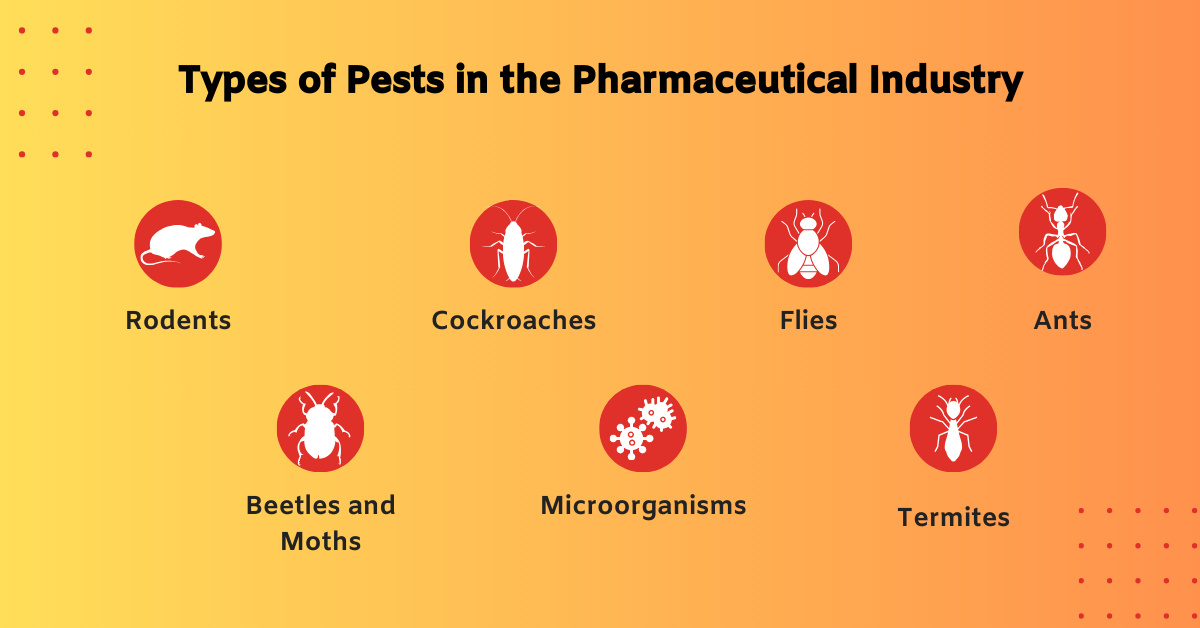
Various types of pests can infiltrate pharmaceutical facilities, each with the potential to cause contamination and damage, and understanding them is a fundamental part of the pest control procedures in the pharmaceutical industry. Here are some common types of pests found in this sector:
- Rodents: Rats and mice are common in pharmaceutical facilities. They can chew through packaging, contaminate products with droppings, and carry harmful pathogens.
- Cockroaches: Known for their resilience, cockroaches can contaminate products and surfaces with pathogens.
- Flies: Flies are carriers of bacteria and viruses, posing a risk to raw materials and finished products.
- Ants: Ants infiltrate even well-sealed areas, potentially causing contamination.
- Beetles and Moths: They can infest raw materials like grains used in pharmaceutical production.
- Microorganisms: Bacteria, molds, and yeast are microscopic pests. They can thrive in various environments and are particularly concerning because they can rapidly contaminate products and surfaces.
- Termites: Termites can damage structural components of facilities, potentially leading to more significant pest infestations.
Effective pest control procedures in the pharmaceutical industry involve addressing current infestations and implementing preventative measures to reduce the risk of future pest problems.
Pest Control Procedure in the Pharmaceutical Industry: Effective Steps
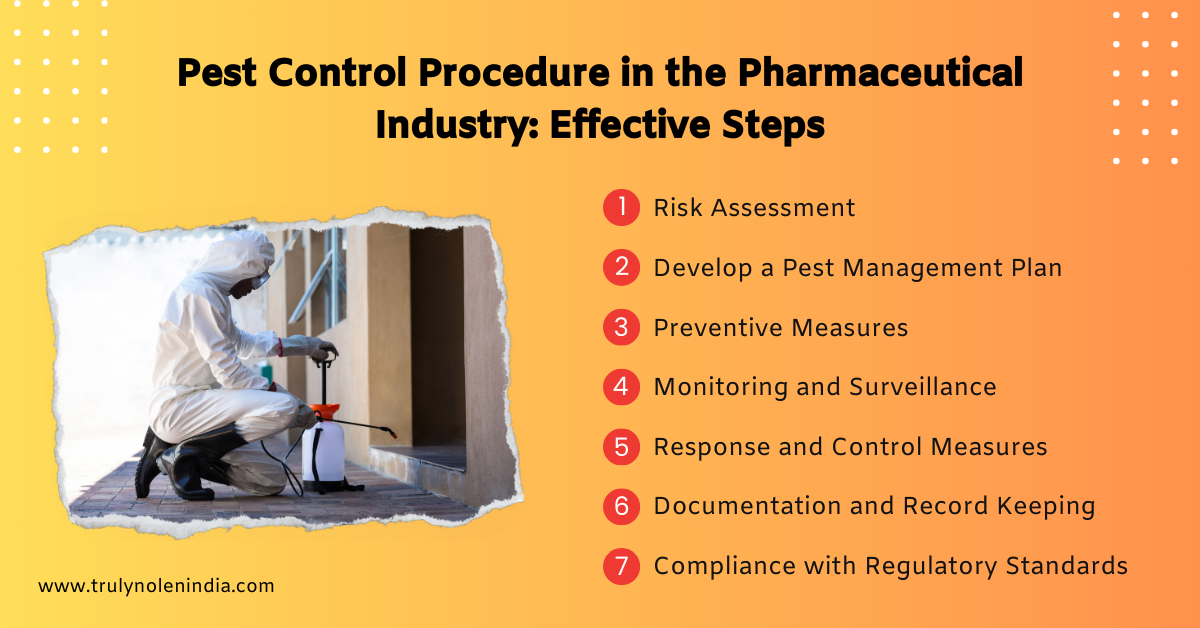
Pest control procedures in the pharmaceutical industry follow a meticulously structured process, encompassing various critical steps to ensure a hygienic and safe production environment. Here is an extended overview of each key step:
Step 1: Risk Assessment
The foundation of an effective pest control procedure in the pharmaceutical industry starts with a comprehensive risk assessment. This stage thoroughly examines the facility to identify potential pest entry points, areas susceptible to infestation, and environmental factors that could encourage pest presence. Factors such as facility layout, location, and historical pest activity are evaluated to determine potential risks.
Step 2: Develop a Pest Management Plan
A tailored pest management plan is developed based on the risk assessment findings. This strategic plan outlines the specific actions needed to prevent, monitor, and control pests within the pharmaceutical facility. It considers the facility’s unique requirements and the types of products manufactured and aligns with industry-specific regulations.
Step 3: Preventive Measures
Preventive measures are a proactive approach to pest control in the pharmaceutical industry. These measures include robust sanitation practices, proper waste management, structural maintenance to seal potential entry points, and environmental modifications to deter pests. Staff training on hygiene practices and regular facility audits also form part of preventive strategies.
Step 4: Monitoring and Surveillance
Continuous monitoring and surveillance are vital for early detection of pest activities. This includes strategically placing traps, regular visual inspections, and employing advanced monitoring technologies. Surveillance helps identify pest hotspots and understand pest behavior, aiding in effective control strategies.
Step 5: Response and Control Measures
When pests are detected, immediate and targeted control measures are essential. This involves choosing the most appropriate method (chemical, physical, or biological) to manage the infestation. The approach is carefully selected to ensure it is effective against the specific pest type and is safe for use in a pharmaceutical environment.
Step 6: Documentation and Record Keeping
Meticulous documentation and record-keeping are pivotal in the pharmaceutical industry’s pest control procedures. This includes maintaining logs of pest sightings and detailed records of the control measures applied and their outcomes. These records are crucial for regulatory compliance, internal audits, and formulating improvements in pest control strategies.
Step 7: Compliance with Regulatory Standards
Adhering to regulatory standards is a critical aspect of pest control procedures in the pharmaceutical industry. The procedures and methods must comply with local and international pharmaceutical manufacturing and safety regulations. This compliance ensures that the methods are effective, safe, and legal.
Implementing these steps in pest control is fundamental to maintaining the high standards of hygiene and safety required in the pharmaceutical industry. This comprehensive approach safeguards the products and upholds the overall health and safety standards essential in this sector.
Challenges in Implementing Pest Control Procedures in Pharmaceutical Industry
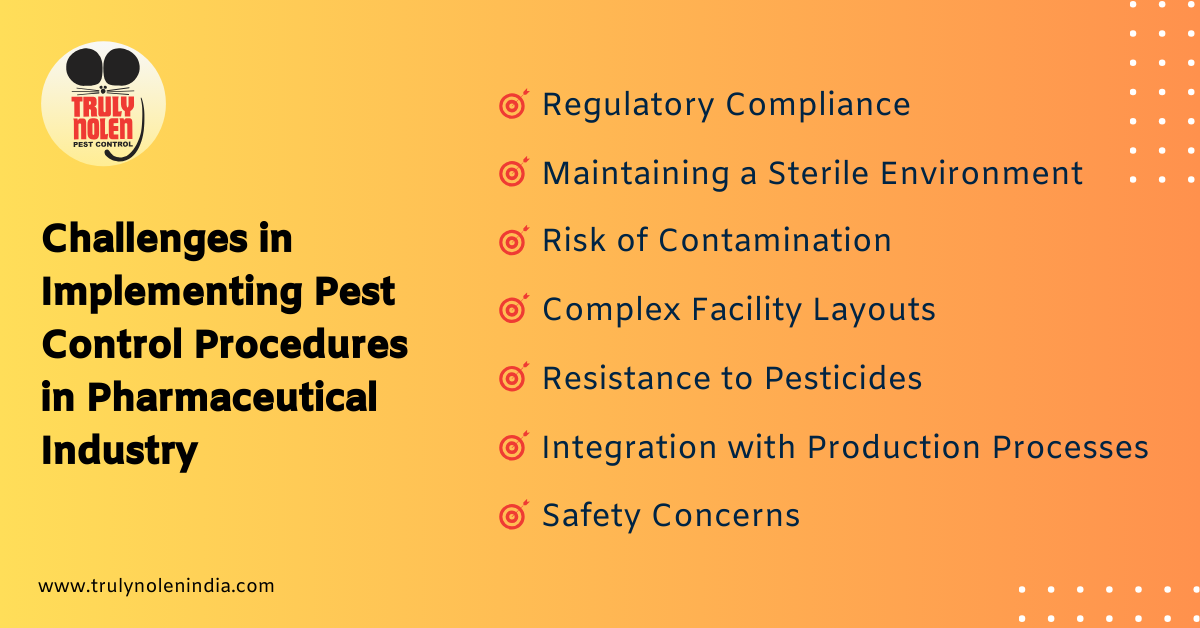
Implementing pest control procedures in the pharmaceutical industry presents several unique challenges that require careful consideration and strategic planning. These challenges stem from the pharmaceutical environment’s stringent requirements and the complexity of managing pests effectively within these constraints.
- Regulatory Compliance: The pharmaceutical industry is subject to rigorous regulatory standards. It is a significant challenge to ensure that pest control methods comply with these standards, particularly regarding the use of chemicals and the prevention of product contamination.
- Maintaining a Sterile Environment: The necessity of maintaining a completely sterile environment in certain areas, such as cleanrooms, complicates the use of typical pest control methods. The introduction of any external agents, including certain pest control substances, can compromise this sterility.
- Risk of Contamination: There is a high risk of product contamination during pest control procedures. A critical concern is ensuring that pesticides or pests do not contaminate pharmaceutical products.
- Complex Facility Layouts: Pharmaceutical facilities often have complex layouts with multiple production areas, storage units, and research labs. This complexity can create challenges in monitoring and controlling pests across different environments and preventing cross-contamination.
- Resistance to Pesticides: Pests developing resistance to conventional pesticides is an ongoing challenge. This requires continuously evaluating pest control strategies and developing more effective and innovative solutions.
- Integration with Production Processes: It is challenging to seamlessly integrate pest control procedures with ongoing production processes without causing disruptions. The procedures must be efficient and effective without interfering with the pharmaceutical facility’s daily operations.
- Safety Concerns: Ensuring the safety of staff and the environment during pest control is paramount. This involves using methods that are effective against pests but safe for humans and the environment.
Given these challenges, consulting a professional pest control service becomes crucial. Professional services bring expertise in dealing with the unique demands of the pharmaceutical industry. They have experience implementing pest control procedures compliant with regulatory standards, effective, and safe. Professionals stay abreast of the latest pest control technologies and strategies developments, ensuring they can provide innovative solutions to emerging challenges.
Moreover, professional pest control services can tailor their approach to the specific needs of a pharmaceutical facility, considering its layout, processes, and specific pest challenges. They can provide comprehensive solutions, including risk assessment, regular monitoring, and integrated pest management, ensuring the facility remains pest-free without compromising safety or product integrity.
Maintain the Safety of Your Pharmaceutical Products with Truly Pest Solution!
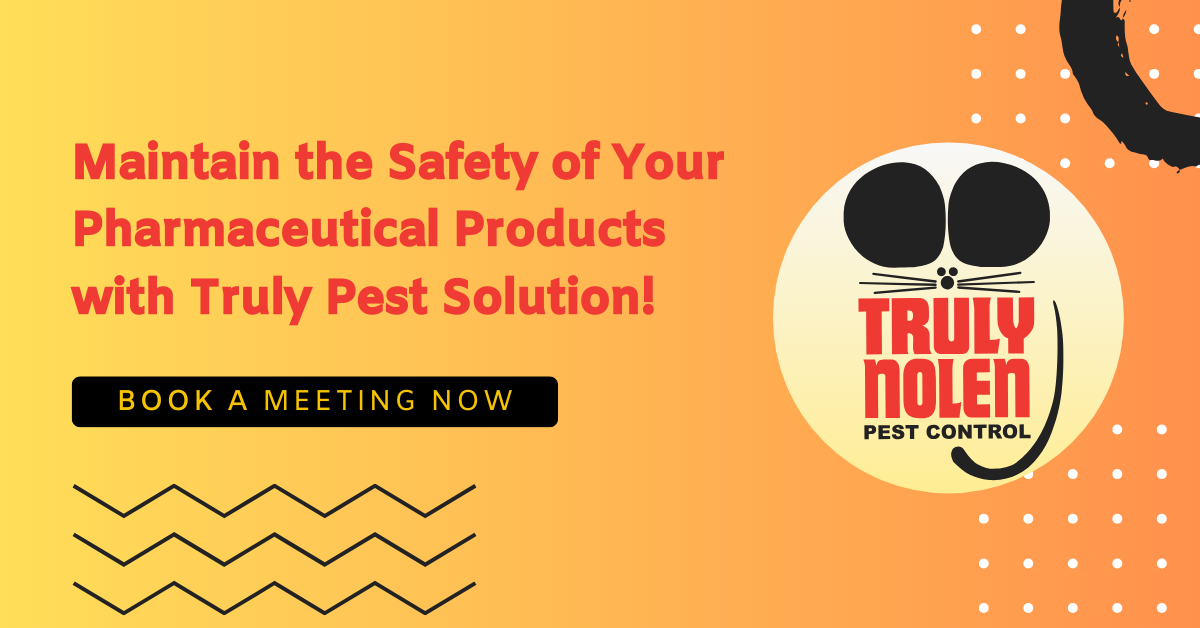
If you’re facing a severe infestation and wondering how best to tackle it, this is where our expertise at Truly Pest Solution can be invaluable.
Recognizing the vital importance of healthcare pest control in upholding the safety standards of hospitals and nursing homes – we are committed to delivering top-tier services customized to the specific pest control requirements of healthcare settings. This necessity extends to areas such as drug manufacturing facilities and laboratories, where even the slightest contamination can compromise the integrity of pharmaceutical products. Our pest control services are equally vital in these settings, providing thorough solutions tailored to the unique challenges of the pharmaceutical industry.
We use innovative technologies and eco-friendly treatments to achieve optimal results while minimizing environmental impact and providing commercial pest control services in healthcare.
Don’t let pests tarnish your reputation – contact Truly Pest Solution today!
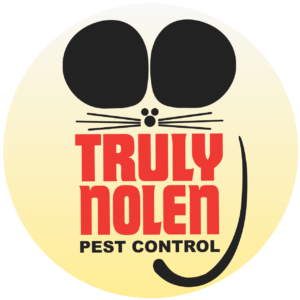
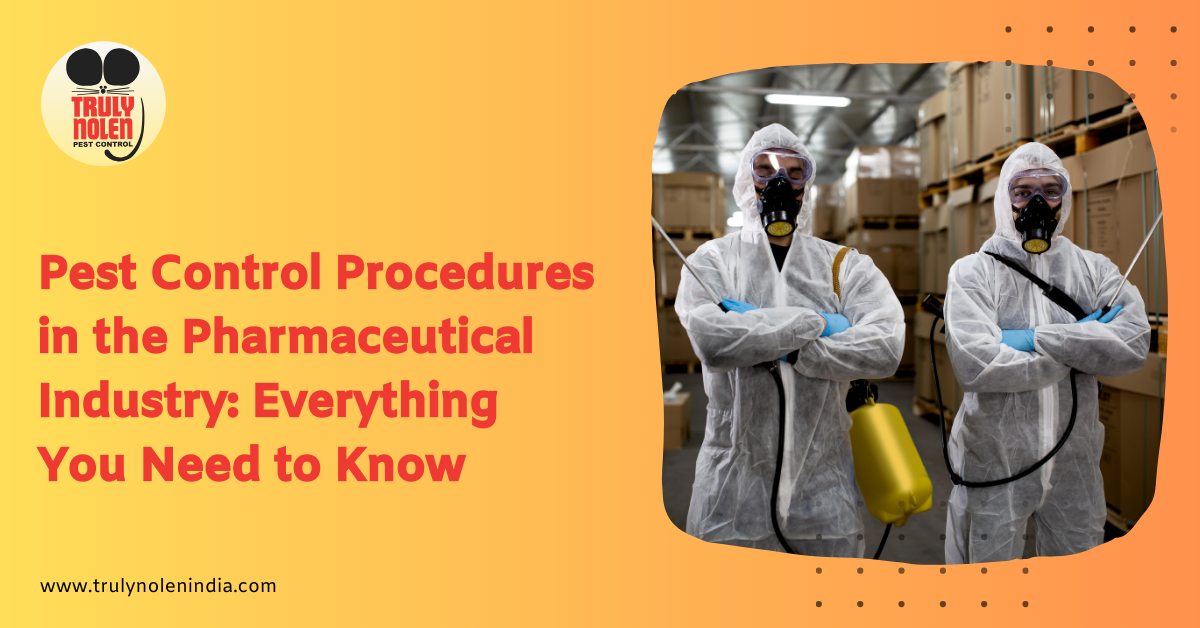
Leave a Reply